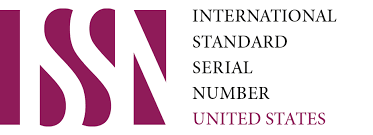Having a Look on the History of Irony
Keywords:
irony, approach, situation, handlingAbstract
In this article is about the theoretical views connected with the characterizing emergence of cynical, expressive words. Besides, some comments are also made about ironically related situations and types, approaches to its application.
References
Ironie in der Alltag, Verlag für Gesrrächsforschung, Martin Hartung, Radolfzell. 2002.
Despoix, Philippe/Fetscher, Justus, 2001: Ironisch/Ironie, in: Ästhetische Grundbegriffe. Historisches Worterbuch in sieben Bänden. Band 3: Harmonie Material. Karlheinz Barck, Martin Fontius, Dieter Schlenstedt u. a. (Hg.). Stuttgart,Weimar: Metzler. S. 198
Ottmers, Clemens, 2007: Rhetorik. 2. aktualisierte und erweiterte Auflage. Stuttgart,Weimar.
Sheraliyeva M. Irony in the current Uzbek prose. Monograph, Tashkent "Akademnashr" 2016.
Xenophon. Athenian. Socratic writings. M.L. 1935.P- 147.
Arnold I.V. Stylistics of the English language. – M.: Flint: Science, 2002. P-66.
Wales K. A Dictionary of Stylistics. – Pearson Education Limited, 2001,240.
Ergasheva M. The issue of concepts in modern linguistics: the use of the concept of "respect" in the expression of irony and irony in Uzbek and English. FarDU.
Giora R. On irony and negation // Discourse Processes, 19:2, 1995. – P. 239-264.
Ernazarova M.S. The grammatical literal meaning is in the integrity of linguistic and pragmatic factors. Authoref.doc.phil.science (DSc).Samarkand-2018.
Downloads
Published
Issue
Section
License

This work is licensed under a Creative Commons Attribution 4.0 International License.
User Rights
Under the Creative Commons Attribution-NonCommercial 4.0 International (CC-BY-NC), the author (s) and users are free to share (copy, distribute and transmit the contribution).
Rights of Authors
Authors retain the following rights:
1. Copyright and other proprietary rights relating to the article, such as patent rights,
2. the right to use the substance of the article in future works, including lectures and books,
3. the right to reproduce the article for own purposes, provided the copies are not offered for sale,
4. the right to self-archive the article.












